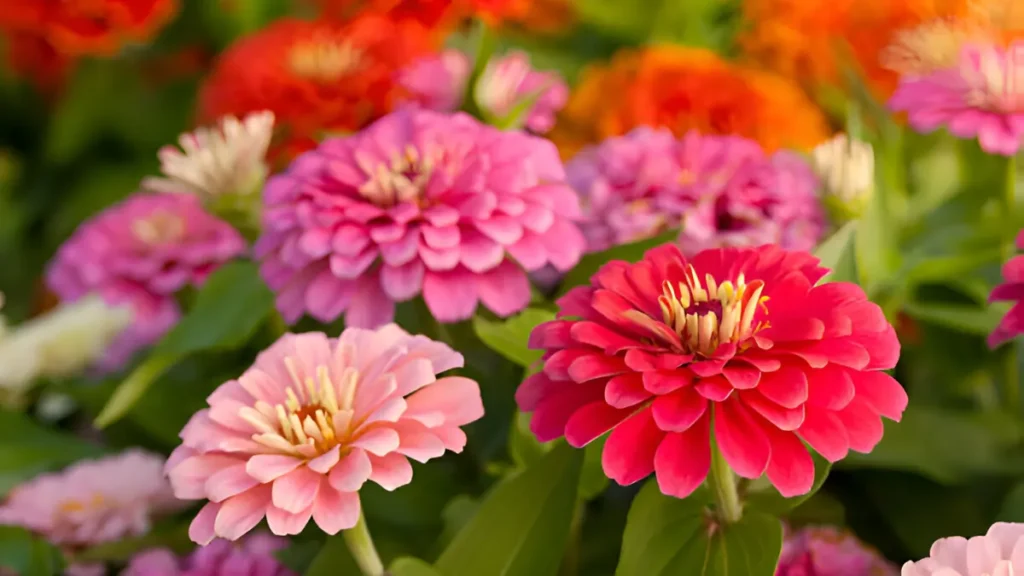Gardeners love zinnia flowers for their vivid colors, variety of shapes, and ease of cultivation. These Mexican-native annual blooms can liven up any garden from the beginning of summer until the first frost. Gardeners love these flowers because of their vibrant colors, long-lasting blooms, and low maintenance needs. Zinnias are a great option if you want to give your yard a pop of color.
Varieties and colors:
- Bright Colors: Zinnias are available in nearly every hue of the rainbow, including orange, yellow, white, pink, red, and even green.
- Variety: They come in a range of shapes and sizes, with single and double petals as well as small, compact and tall, exquisite variations.
- Prolonged Blooming Season: Zinnias continuously add color to your garden from the beginning of summer until the first frost.
- Draw Pollinators: Butterflies, bees, and other helpful insects are drawn to these flowers in large quantities.
How to plant and care zinnia flowers:
- Planting: After the last frost, scatter zinnia seeds directly into the garden. Moreover, they can be started indoors four to six weeks prior to the last frost date. Depending on the kind, plant the seeds 6–18 inches apart and 1/4 inch deep.
- Watering: To minimize powdery mildew, water zinnias frequently but not overhead. Watering the plants from the base is ideal.
- Fertilizing: Throughout the growth season, zinc plants gain from a balanced fertilizer that is provided every few weeks.
- Deadheading: Eliminate wasted flowers to promote new blooms and prolong the blooming season.
- Pests and Problems: Insecticidal soap or neem oil are effective against small, sap-sucking insects. a fungal infection on leaves that manifests as a white powder. Avert it by making sure there is adequate airflow and refraining from watering from above. Webbing and speckled leaves are caused by tiny bugs. Use insecticidal soap or a regular misting of water to keep them under control.
Conclusion:
Zinnia flowers are a pleasant addition to any garden since they bloom continuously throughout the growing season and offer brilliant hues. These flowers can provide color and brightness to any garden area with little maintenance and a plenty of types to pick from. Gardening novices or experts alike will be rewarded with a breathtaking display of color when they grow zinnias. You may have a plentiful display of these charming blooms all summer long by following these easy procedures.
Certainly! If you’d like to learn more, please consider following our WhatsApp Channel: Harvest Gardening
A frequently asked questions:
Q1: Can zinnia flowers be grown in containers?
A1: It is possible to grow zinnia flowers successfully in pots. Make sure the plants receive regular watering and full sunlight, and choose a large pot with sufficient drainage.
Q2: Are zinnias perennials?
A2: Most zinnias are grown as annuals, which means that they go through their whole life cycle in a single growing season. But in areas without frost, they may act more like transient perennials.
Q3: When to plant zinnia seeds?
A3: Once the earth has warmed up following the last date of frost, usually in late spring, plant zinnia seeds outdoors. Sow seeds indoors 4-6 weeks ahead of the last anticipated frost date in colder areas.
Q4: How do you propagate zinnia flowers?
A4: Typically, zinnias are propagated from seeds. After the last frost, sow the seeds directly in the garden; alternatively, start them indoors four to six weeks beforehand.

